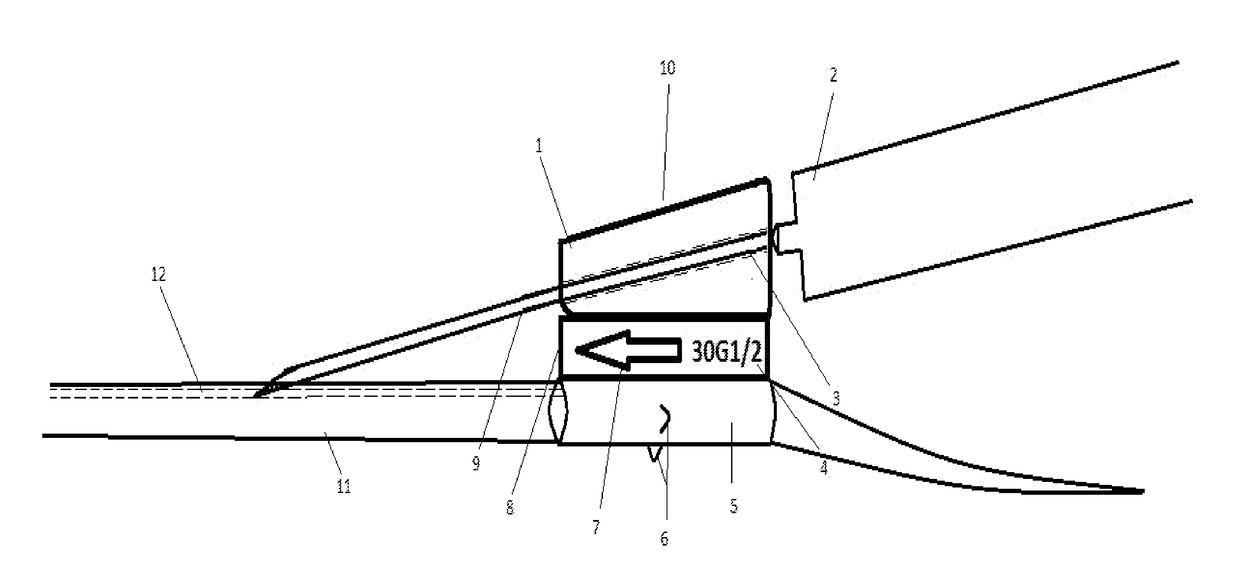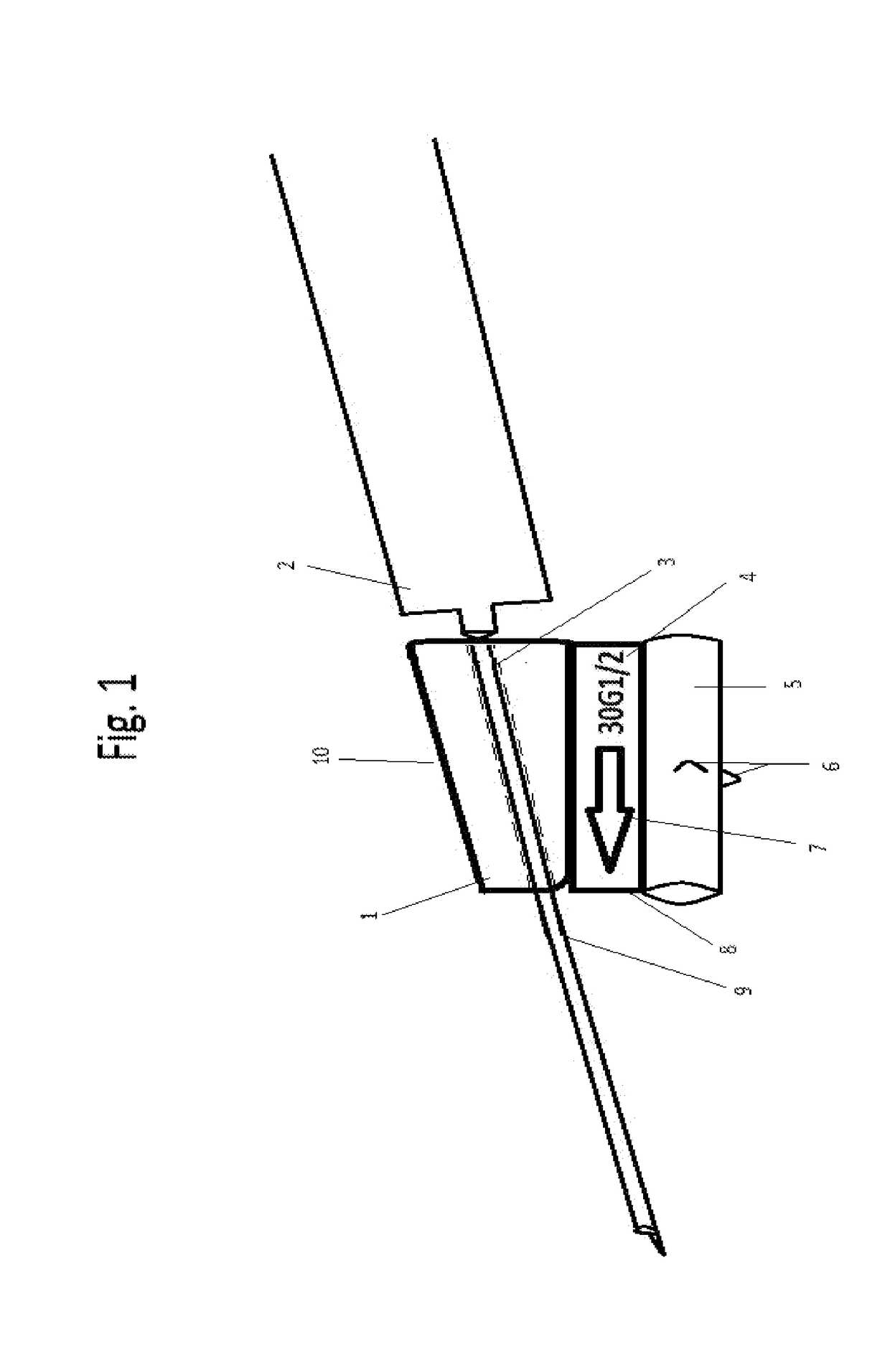Animal Injection Clip
a technology of animal injection and clip, which is applied in the field of laboratory animal injection apparatuses, can solve the problems of wasting injection material and mice, not universally applicable, and still requires experience, so as to prevent sterility and cross-contamination problems, improve accuracy, and improve safety.
- Summary
- Abstract
- Description
- Claims
- Application Information
AI Technical Summary
Benefits of technology
Problems solved by technology
Method used
Image
Examples
Embodiment Construction
[0016]The following is a detailed description of the invention to allow those skilled in manufacturing such products to understand and create the invention, and include any variations apparent to them that fall within the scope of the present invention.
[0017]The clip 10 consists of an elastic material which acts as a tourniquet 5, and a rigid plastic ring 1 attached above the tourniquet 5. The tourniquet 5, when not stretched, should have an inner diameter of no larger than 2.5 mm and no less than 2 mm, and has an inner diameter of no larger than 5 mm when stretched. The tourniquet 5 material should be elastic to accommodate these diameters, but also maintain low pressure to prevent complete vessel occlusion and mouse death.
[0018]The plastic ring 1 should be rigid and attached to the outer portion of the tourniquet 5 via a support platform 8. The attachment can be accomplished using water-proof adhesive or plastic spot welding. The ring 1 will be made to an inner diameter 3 equivale...
PUM
 Login to View More
Login to View More Abstract
Description
Claims
Application Information
 Login to View More
Login to View More - R&D
- Intellectual Property
- Life Sciences
- Materials
- Tech Scout
- Unparalleled Data Quality
- Higher Quality Content
- 60% Fewer Hallucinations
Browse by: Latest US Patents, China's latest patents, Technical Efficacy Thesaurus, Application Domain, Technology Topic, Popular Technical Reports.
© 2025 PatSnap. All rights reserved.Legal|Privacy policy|Modern Slavery Act Transparency Statement|Sitemap|About US| Contact US: help@patsnap.com



